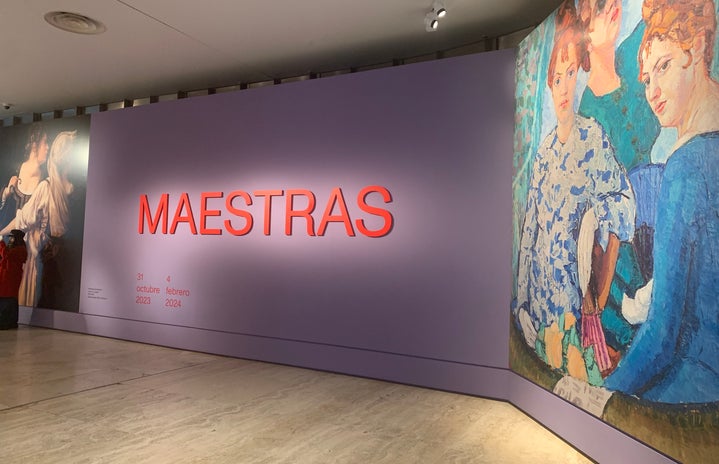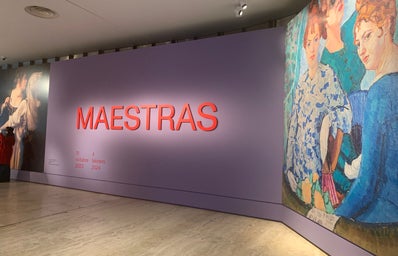Who is far too often forgotten when we consider the great master artists? The Museo Nacional Thyssen-Bornemisza in Madrid, Spain answered with their exhibition titled Maestras, the feminine word for “masters” in Spanish. In a journey from the late 16th to early 20th century, Museo Thyssen highlighted eight themes and nearly one-hundred artworks. With such an overwhelming selection of mastery to choose from, I have selected just a few artists and their works in the exhibition to provide a glimpse at the breadth of theme, style, and medium of these maestras.
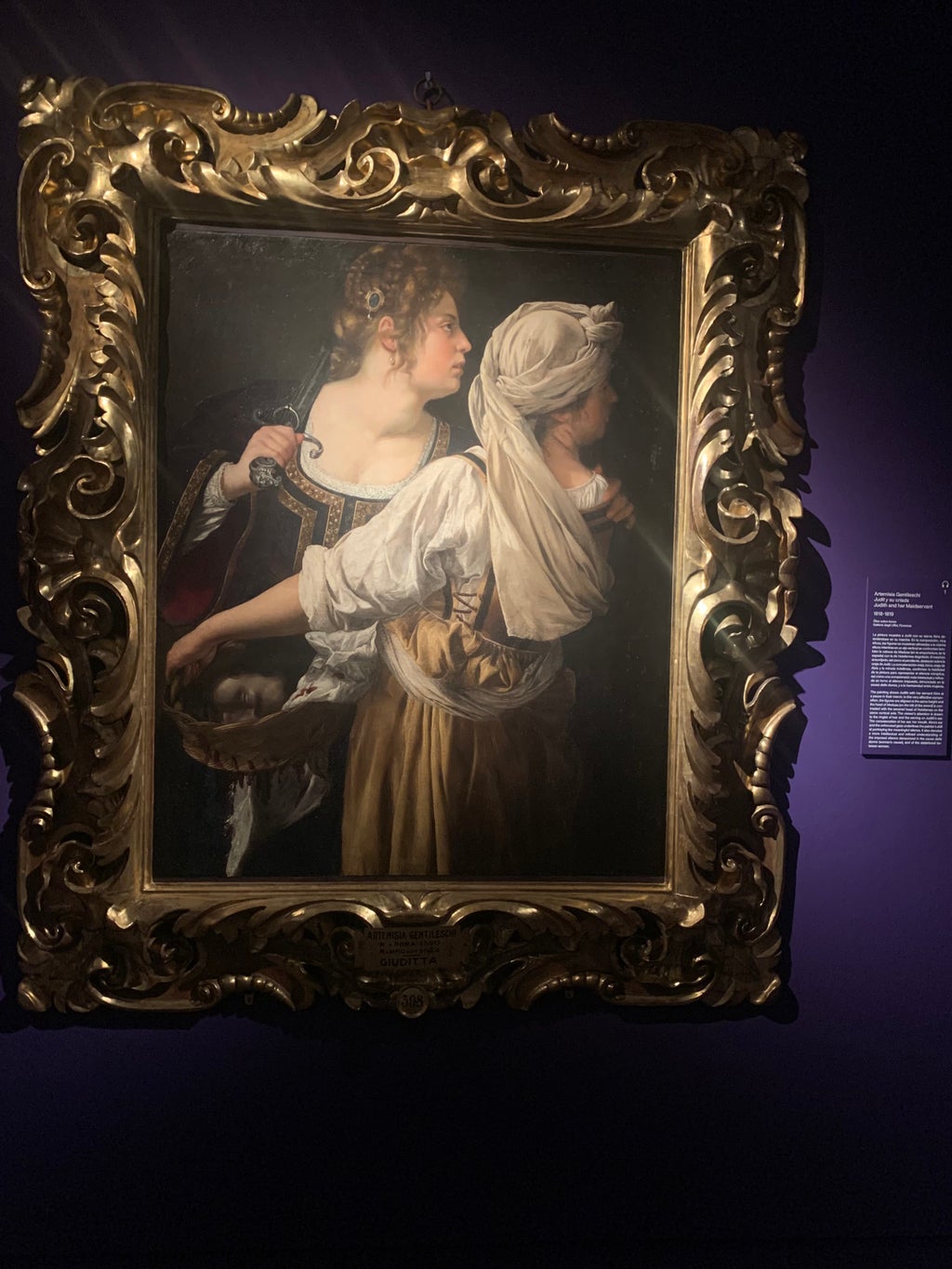
Artemisia Gentileschi (1593–1653)
A glance through the door to the exhibition might offer onlookers a look at Artemisia Gentileschi’s Ufizzi Judith and Her Maidservant (1618–1619), a scene the Italian painter revisited multiple times, and also the marketing image for the exhibition. The work references the biblical story of Judith who, to save her town from invading Assyrian forces, beheads their leader, Holofernes. Gentileschi’s work is flanked by paintings by Fede Galizia and Lavinia Fontana also portraying Judith, her maidservant, and the pallor of Holofernes severed head. A cheery welcome to the exhibition— visitors immediately know who holds the power in this space.
If one Gentileschi isn’t enough, the Museo Thyssen managed to wrangle together three other paintings of hers, all referencing biblical stories of women triumphing over men, simultaneously threatening and inviting into the world of virtuous heroines.
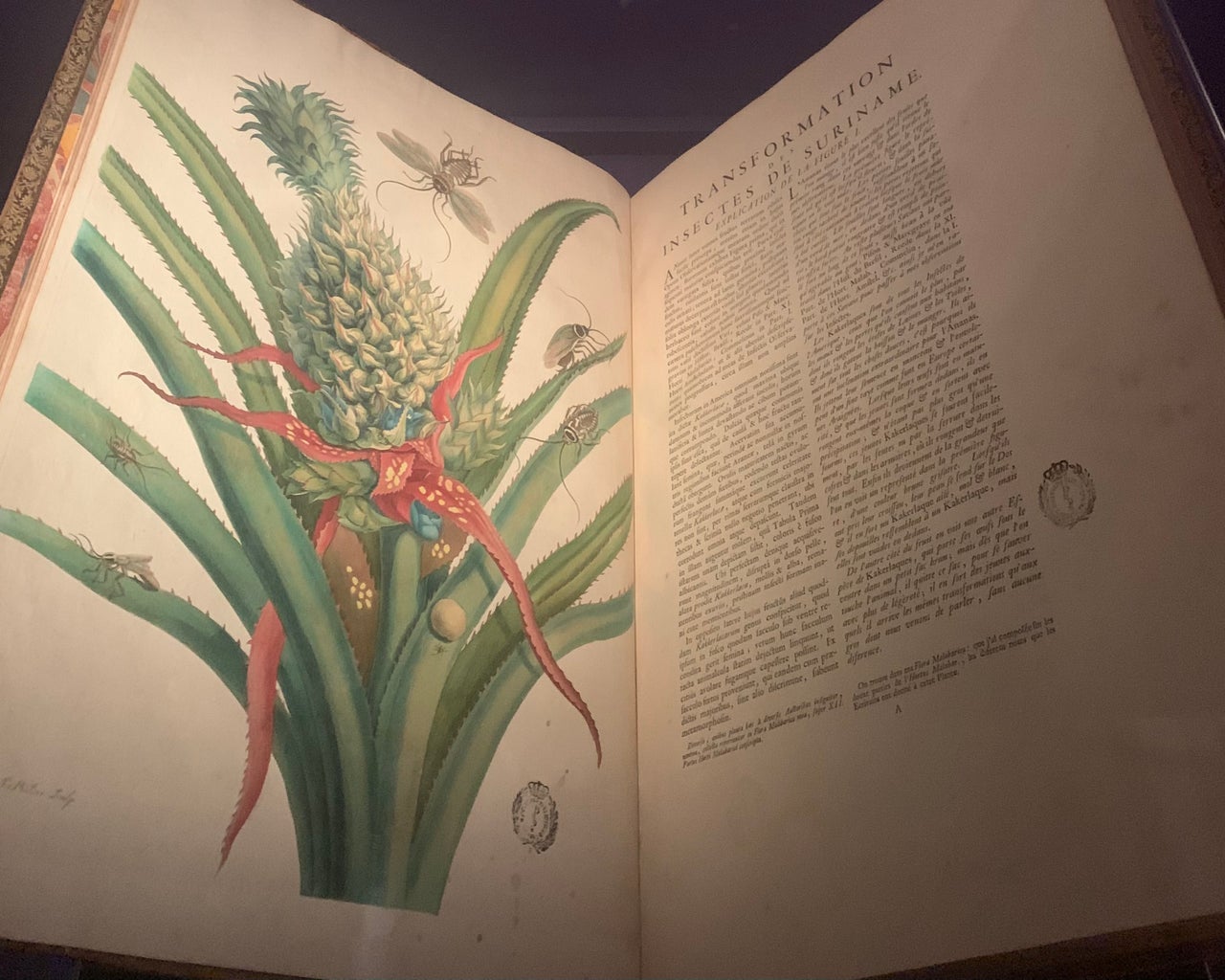
Maria Sibylla Merian (1647–1717)
From the biblical to the scientific, offering a glimpse of the plants and insects inside, German naturalist and artist Maria Sibylla Merian’s Dissertation sur la generation et les transformations des insectes de Surinam lies open for viewing. Contributing greatly to studies of insects, the open page shows her print of a pineapple with cockroaches drawn from her studies while visiting Suriname on the northeast coast of South America. Her works characteristically depict insects alongside the plants they depended on and are accompanied by texts that made her watercolor engravings not only beautiful, but scientifically insightful.

Berthe Morisot (1841–1895)
Did I just want an excuse to throw her work in? Maybe. Nonetheless, works by French artist Berthe Morisot were definitely recurring throughout the exhibition. Morisot was the only woman exhibited in the first Impressionist exhibition in 1874. Among the works of Morisot displayed was The Cherry Tree alongside works of other women depicting women at work. Showed in Morisot’s first solo exhibition, the female artist again derives power from biblical themes, although not as explicitly as Gentileschi. A woman picking fruit was reminiscent of both Eve and the misogynistic literature written at the time. Depicting a moment between two women, Morisot recasts this narrative, transforming it into a scene of unity and power.

The women of Morisot came in pairs for this exhibition, with her two other works Summer’s Day and The Sisters shown.

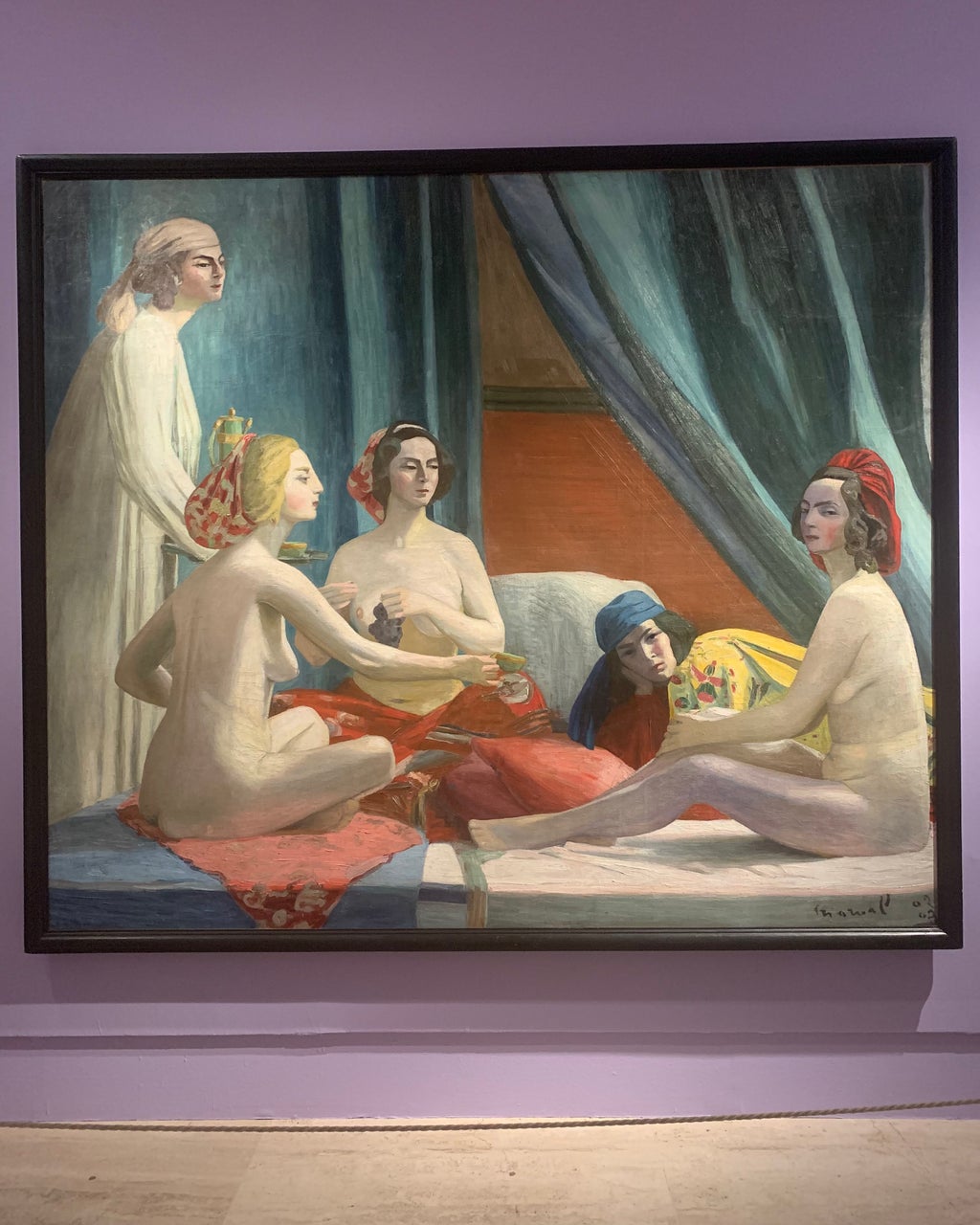
Jacqueline Marval (1866–1932)
French artist Jacqueline Marval was abundantly present in Maestras not only in artwork, but in visage. Her 1897 Self-Portrait softens angular lines into a lithograph of herself, emerging from a shade background. However, it is in her The Odalisques that she paints herself not once but twice. Odalisques were female concubines often depicted in harems that were part of the European Orientalist imagination. Her five selves subvert the eroticized odalisque of the male gaze and painter, two of them challenging the viewer as they look directly out of the canvas.

Alice Bailly (1872–1938)
Alice Bailly certainly encapsulates the variety of medium and style presented in this exhibition.
A Swiss artist, not only did she create Teatime a fragmented swirl of hands, faces, and cups revealing her cubist influences and placed at the end of the exhibition, but the Museo Thyssen also displayed two of what she called her “wool paintings”—not to be confused with embroidery or tapestry. Dancing women were a common theme in the over fifty she produced, with thick threads of wool or yarn layered like brushstrokes in swaths and swishes of color.

Thus concludes a selection in which many maestras were left out, and of an exhibition in which time, money, and space required that even more be left out. But, in honor of Women’s History Month, these are a few of the many artists to inspire all year long, and one of many exhibitions to come honoring such maestras.
